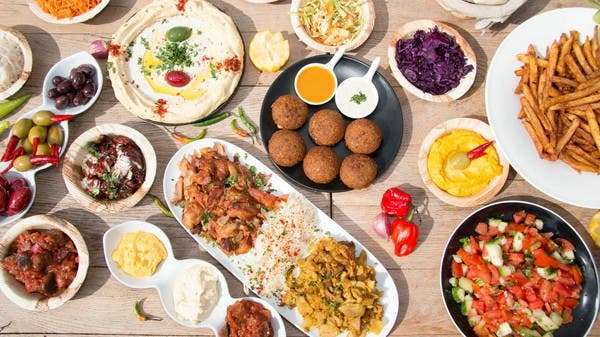Latest News
- Internet Censorship Pact Condemned By MP-elect Bushehri
- Police Arrest Two Men Previously Convicted In Misdemeanor Cases
- The Theft Of 50 Birds In Kuwait’s Barr Abdaliyah Area
- Anti-Corruption Authority Efforts Embrace An Integrated Work Sys...
- European Union Keen On Exempting Kuwaitis From Schengen Visa
- Expat Admits Killing His Compatriot In A Quarrel Over Cash
- Decomposed Corpse Of A Girl Found In Nugra Flat
- 4.4% Private Sector Employment Sparks Concerns In Kuwait
- CSC Separates Job Appointments From Specific Agencies
- Municipality Shuts Store And Issues 23 Violations
- Kuwaiti Tweeter Jailed For Insulting Rulers, Judiciary, And Nati...
- MoH Opens Registration For Scholarships And Study Leaves
Food Consumption Increases By 50% During Ramadan; Prices Of Most Consumer Goods Rise

From preparing to buy Ramadan delicacies and attire to decorations, the month of fasting in Kuwait, like the rest of the Islamic world, holds a special place in the hearts of families.
The most important thing on consumers' minds prior to Ramadan is to store various foodstuffs, sometimes due to a lack of time during the holy month or for various other reasons, and poultry is one of the items that are stored, with quantities ranging from 15 to 40 cartons (10 pieces per carton) per family, including whole chicken, fillets, wings, and other items, and the quantity increases or decreases depending on the number of family members and how much they consume, according to experts.
During Ramadan, a family of five consumes between 15 and 30 kilograms of meat, in addition to rice, pasta, soups, dates, and Ramadan desserts, as well as 30 to 40% of dairy products such as yogurt.
According to sources, food consumption in Kuwait rises by up to 50% during Ramadan due to the enormous number of meetings, prayers, and feasts (most of the food is consumed at night due to staying up late).
During Ramadan, some sectors, particularly the food sector, restaurants, retail stores that sell plastic materials, household utensils, and Ramadan decorations, clothing stores, dates and sweets stores, and the tourism and travel sector, such as game stores, sports equipment, and cafés, do well, but others, such as game stores, sports equipment, and cafés, as well as the tourism and travel sector, fast food restaurants, hotel room reservations, and the like, do not.
According to reports, the prices of spices and nuts, which are among the basic commodities in Ramadan, have increased by about 40% compared to last year, as have the prices of dried fruits, whose average consumption per family reaches 3 kilos per week and is subject to change depending on the number of family members.
Various food firms, cooperative societies, and even retail stores that provide Ramadan necessities vie for the greatest deals and discounts. At the level of food prices, competition is fierce, as companies make discounts and offers, especially during Ramadan, as well as shopping centers and cooperative societies among them. For example, you can find the price of a specific food commodity at one coop for a certain price and a slightly cheaper or more expensive price at another cooperative society, leaving the consumer free to choose the best for him.
After iftar, Ramadan sweets are considered one of the most important things, and sweet shops of all kinds compete to offer all that is new in Ramadan sweets. It is worth noting that Ramadan and oriental sweets shops begin preparing for Ramadan two months in advance, in order to keep up with the crowding and huge requests, where the percentage of sweets purchased reaches more than 60% of the normal time.
Raw materials for sweets have grown in price by more than 100% before Ramadan; therefore merchants have been accumulating these items since the beginning of the year, noting that the most popular sweets during Ramadan are kunafa, Qatayef, Warbat, and Jalash with cheese and walnuts, as well as baklava.
Dates are one of the most important aspects of Ramadan for all kinds of people, as their consumption rises by 80 percent compared to normal days, with Al-Khalas and Rateb dates being among the most popular, whether for breakfast, coffee, or as gifts.
According to sources, there is an 80 percent rise in date consumption over regular times; a 60 percent increase in sweets demand; 50 percent of food is wasted during Ramadan; and, shockingly, a single household eats roughly 3 kilos of dried fruits on average each week.
Budget for Ramadan expenditures
• Ramadan decorations cost between 20 and 50 dinars.
• Plastic products cost between 30 and 40 dinars.
Trending News
-
 Kuwait Implements Home Biometrics Services Ahead O...
14 April 2024
Kuwait Implements Home Biometrics Services Ahead O...
14 April 2024 -
 Kuwait Airways Provides Update On Flight Schedule...
14 April 2024
Kuwait Airways Provides Update On Flight Schedule...
14 April 2024 -
 Kuwait Airways Introduces Convenient Home Luggage...
15 April 2024
Kuwait Airways Introduces Convenient Home Luggage...
15 April 2024 -
 Expat Residency Law Amended By Kuwait Ministerial...
20 April 2024
Expat Residency Law Amended By Kuwait Ministerial...
20 April 2024 -
 Gathering For Eid Al-Fitr Prayers: Kuwaiti Citizen...
10 April 2024
Gathering For Eid Al-Fitr Prayers: Kuwaiti Citizen...
10 April 2024 -
 Two Expats Are Arrested For Stealing From Salmiya...
17 April 2024
Two Expats Are Arrested For Stealing From Salmiya...
17 April 2024 -
 An Egyptian Expat Dies At Kuwait's Airport
11 April 2024
An Egyptian Expat Dies At Kuwait's Airport
11 April 2024 -
 Bay Zero Water Park Kuwait: Summer Season Opens Ei...
11 April 2024
Bay Zero Water Park Kuwait: Summer Season Opens Ei...
11 April 2024 -
 Temperature Increases Cause Electricity Load Index...
21 April 2024
Temperature Increases Cause Electricity Load Index...
21 April 2024 -
 Kuwait Airways Resumes Flights To Beirut And Oman...
15 April 2024
Kuwait Airways Resumes Flights To Beirut And Oman...
15 April 2024












Comments Post Comment